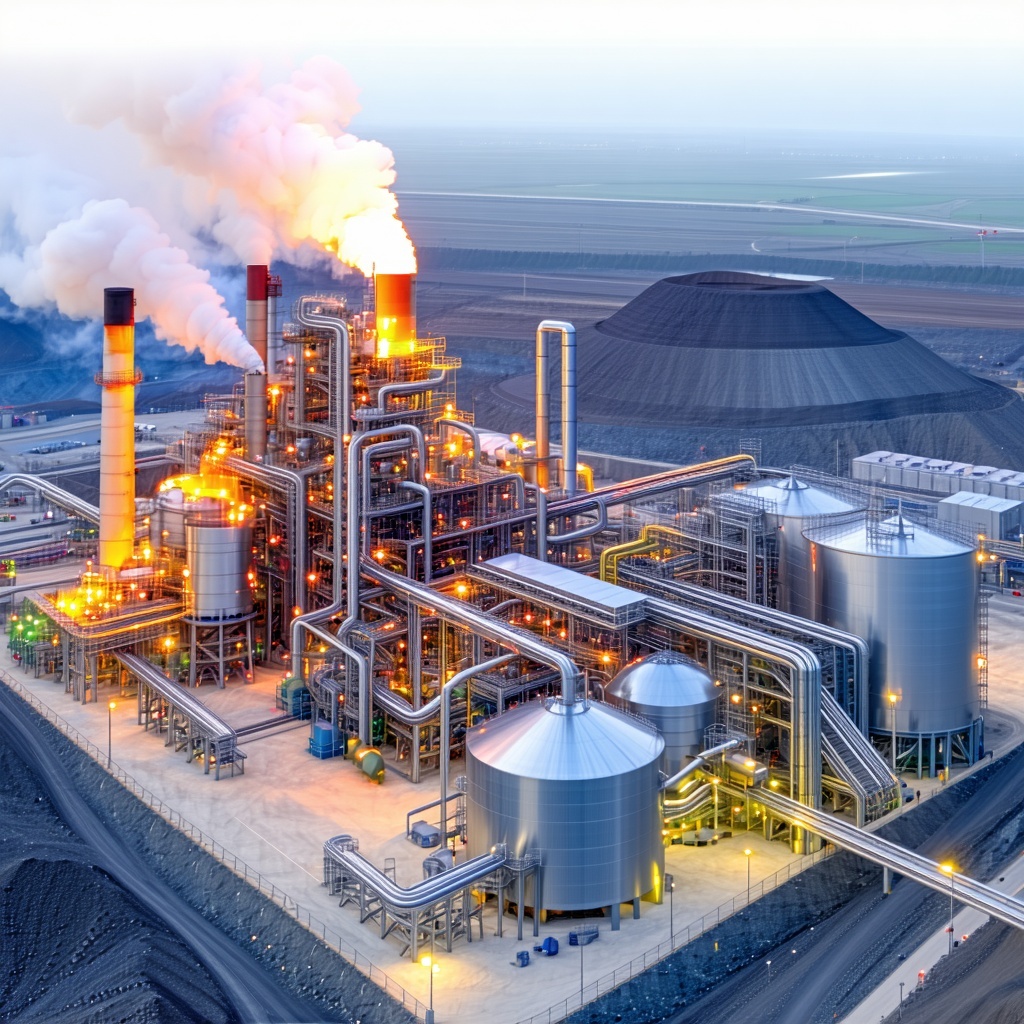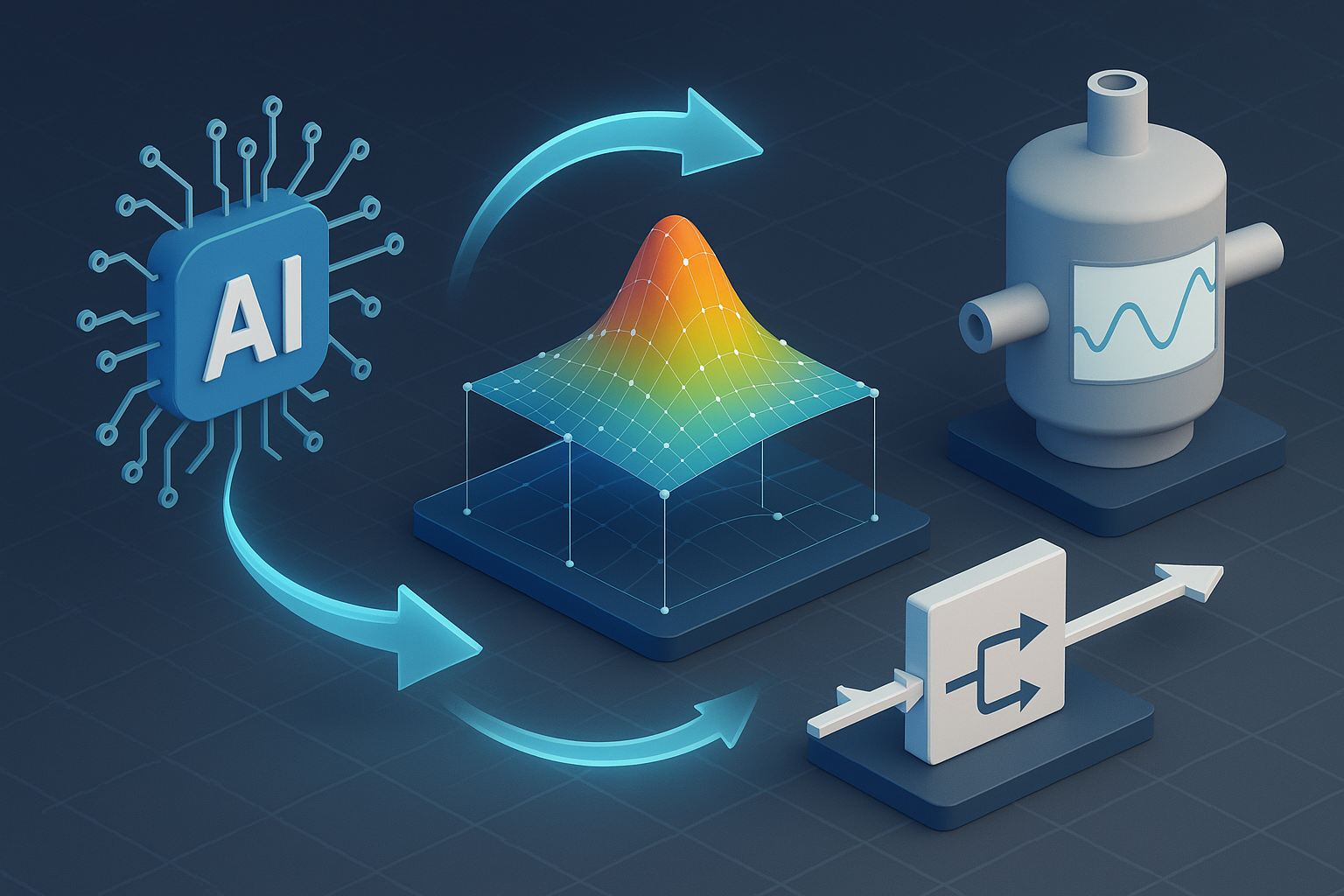Smarter Heat, Cleaner Future: The Rise of Intelligent Furnace Control in Metal, Mining & Cement

Introduction
Industrial furnaces are at the heart of operations in the metal, mining, and cement industries. From reheating billets in steel rolling mills to annealing strips and sintering clinker, the thermal precision and energy efficiency of these systems directly impact product quality, operating cost, and environmental footprint. However, many furnaces are still operated manually or with limited automation which leading to inconsistent temperature profiles, higher fuel consumption, and sluggish response to changing operating conditions. The need for intelligent automation has never been more urgent. Model Predictive Control (MPC) is emerging as a transformative solution to this challenge. This article explores how MPC can upgrade furnace control from a manual, reactive process to an intelligent, data-driven, and optimized system.
What is Model Predictive Control (MPC)?
Model Predictive Control is an advanced control algorithm that uses a mathematical model of the process to predict its future behavior over a given time horizon. Based on these predictions, it optimizes control actions such as burner settings, air-fuel ratio, or conveyor speeds while satisfying process constraints articulated in the figure below.
Key Features of MPC :-
- Predicts system behavior in real time.
- Solves an optimization problem at every control step
- Manages multiple inputs and outputs with constraints
- Continuously updates based on feedback
In furnaces, MPC predicts temperature distributions and optimally adjusts actuators to meet temperature setpoints, improve fuel efficiency, and respond quickly to disturbances.

Figure 1: MPC work flow architecture
Applications of MPC in Furnaces
- Reheating Furnaces (Metals Industry):
MPC ensures uniform heating of billets before rolling by controlling zone-wise temperatures and movement timing. It minimizes scale formation, reduces thermal stress, and lowers fuel usage. - Annealing Furnaces (Steel/Aluminum): In batch and continuous annealing lines, MPC precisely controls heating and cooling rates, ensuring metallurgical properties like grain structure and mechanical strength are consistently achieved.
- Rotary Kilns (Cement Industry): MPC handles varying feed compositions and kiln dynamics. It optimizes fuel usage, maintains stable clinker quality, and minimizes emissions.
- Sintering and Pelletizing (Mining): MPC improves temperature control and throughput in agglomeration furnaces while maintaining product strength and size distribution.
Why Replace Manual Operation with MPC?
-
Consistency
-
Manual: Relies on the experience and attention of human operators. Results can vary across shifts or individuals.
-
MPC: Uses a predictive model to ensure repeatable, accurate control decisions every time, reducing variability.
-
-
Response Time
-
Manual: Operators react after a disturbance is noticed, causing a delay.
-
MPC: Anticipates changes using real-time data and predictive models, enabling faster and often preemptive adjustments.
-
-
Fuel Optimization
-
Manual: Follows predefined rules or setpoints, which may not adapt to changing load or conditions.
-
MPC: Continuously adjusts parameters (like air/fuel ratio) for optimal combustion, reducing waste and cost.
-
-
Constraint Handling
-
Manual: Operators can only manage a few variables at a time, increasing the risk of violating constraints (like pressure, temperature).
-
MPC: Handles multiple inputs and outputs simultaneously, maintaining all variables within safe and optimal limits.
-
-
Sustainability
-
Manual: Often results in inefficiencies, higher fuel use, and more CO₂ emissions.
-
MPC: Drives operations towards lower energy consumption and emissions by maximizing efficiency.
-
Architecture of MPC for Furnace Control

Key Components:
- Inputs: Real-time temperature, fuel flow, material position
- Process Model: Captures thermal dynamics and constraints
- Controller: Solves optimization problem every few seconds
- Outputs: Actuator signals to burners, dampers, and conveyors
Case Study Snapshot: Annealing Furnace
Before MPC:
- Temperature overshoot and undershoot
- High scale loss (~2.5%)
- Unbalanced energy distribution
-4.png?width=860&height=409&name=image%20(5)-4.png)
-Jul-09-2025-01-20-07-0217-PM.png?width=860&height=411&name=image%20(6)-Jul-09-2025-01-20-07-0217-PM.png)
Figure 2: Temperature overshoot and undershoot before MPC
After MPC:
- ±5°C accuracy in billet temperature
- Reduced scale loss to <1.2%
- 6–10% fuel savings
- Lower CO₂ emissions per ton of steel
-1.png?width=868&height=409&name=image%20(4)-1.png)
Figure 3: Temperature within ±5°C limit after MPC

Figure 4: Comparison of target heating achievement before and after MPC.
Benefits of Implementing MPC
1) Improved Product Quality:
MPC ensures temperature consistency across the load, leading to uniform material properties.
2) Operational Efficiency:
Dynamic adjustment of inputs based on predicted needs reduces waste and fuel costs.
3) Sustainability Gains:
By optimizing combustion, MPC contributes to reduced CO₂ and NOx emissions.
4) Reduced Manual Intervention:
Operators shift from control execution to supervision and exception handling.
5) Data-Driven Insights:
Historical MPC data supports predictive maintenance and continuous improvement.
-3.png?width=1182&height=594&name=image%20(7)-3.png)
Figure 5: Economic Benefit of MPC.
Glossary
- MPC: Model Predictive Control
- Setpoint: Desired value for a process variable (e.g., temperature)
- Dead time: The Delay between an input change and its effect on output
- Zone: Furnace compartment with independently controlled heating
- NOx: Nitrogen oxides—air pollutants from combustion
FAQs
- Q: Can MPC be retrofitted on existing furnaces?
A: Yes, MPC systems can be integrated as master control system with legacy PLC/DCS systems, provided accurate process models and sensor data are available. - Q: What’s the typical ROI for MPC in furnace control?
A: Return on investment varies, but fuel savings of 5–15% and quality-related yield improvements can often justify payback within 12–18 months. - Q: Is AI required to implement MPC?
A: Not necessarily. MPC can use both mathematical AI-based forecasting models for optimization. However, AI can enhance MPC by improving models or disturbance prediction. - Q: How is safety ensured with MPC?
A: MPC includes constraints on maximum temperature, fuel flow, and pressure to ensure safe operation within design limits. - Q: Can MPC handle variations in material feed or composition?
A: By continuously updating predictions and control actions, MPC adapts to feed variability and maintains desired output quality.
Conclusion
Model Predictive Control is more than just an advanced algorithm; it's a catalyst for operational transformation. By shifting from reactive to predictive control in furnace operations, industries can unlock unprecedented levels of product consistency, energy efficiency, and sustainability. Whether in metals, mining, or cement, MPC enables smarter decisions, cleaner processes, and more reliable outcomes for paving the way toward Industry 4.0 excellence.
Domain-Wise PlantGPT
It is built around purpose-designed micro-agents that collaborate to provide real-time conversational assistance, decision support, and advisory insights tailored to daily plant operations.
Book A Demo →Dx. Consulting Services
Our strength lies in the fusion of deep consulting experience, process domain expertise, and digital execution excellence. This rare combination enables us to go beyond traditional digital transformation.
Book A Meeting →Agentic AI Services
Knowledge Graph as a Service (KGaaS) is a scalable, agent-driven platform that transforms siloed, unstructured, and structured industrial data into a semantically connected, intelligent knowledge network. Built on industry standards and ontologies, the platform enables next-gen applications in root cause analysis, process optimization, SOP automation, and decision augmentation.
Book A Demo →FAQ
It has survived not only five centuries, but also the leap into electronic.
Can MPC be retrofitted on existing furnaces?
Yes, MPC systems can be integrated as a master control system with legacy PLC/DCS systems, provided accurate process models and sensor data are available.
What’s the typical ROI for MPC in furnace control?
Return on investment varies, but fuel savings of 5–15% and quality-related yield improvements can often justify payback within 12–18 months.
Life Science / Pharma
reproduced below for those interested. Sections 1.10.32 and 1.10.33 from "de Finibus Bonorum et Malorum" by Cicero are also reproduced in their exact original form, accompanied by English versions.
There are many variations of passages of Lorem Ipsum available, but the majority have suffered alteration in some form.
Life Science / Pharma
reproduced below for those interested. Sections 1.10.32 and 1.10.33 from "de Finibus Bonorum et Malorum" by Cicero are also reproduced in their exact original form, accompanied by English versions.
There are many variations of passages of Lorem Ipsum available, but the majority have suffered alteration in some form.
Life Science / Pharma
reproduced below for those interested. Sections 1.10.32 and 1.10.33 from "de Finibus Bonorum et Malorum" by Cicero are also reproduced in their exact original form, accompanied by English versions.
There are many variations of passages of Lorem Ipsum available, but the majority have suffered alteration in some form.
Life Science / Pharma
reproduced below for those interested. Sections 1.10.32 and 1.10.33 from "de Finibus Bonorum et Malorum" by Cicero are also reproduced in their exact original form, accompanied by English versions.
There are many variations of passages of Lorem Ipsum available, but the majority have suffered alteration in some form.
Related Blogs


